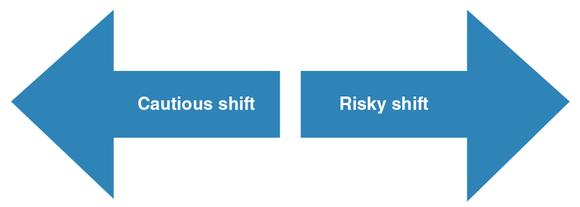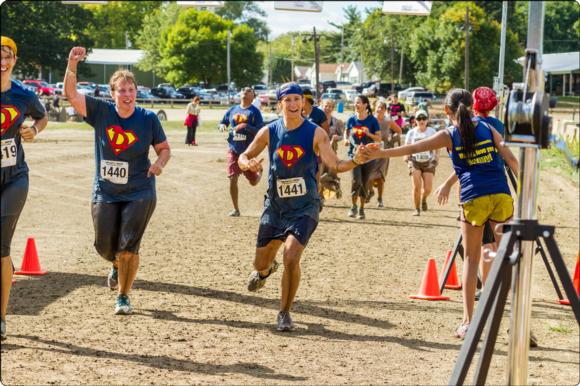Common Issues With Groups
This is an excerpt from Leadership in Recreation and Leisure Services by Timothy S O'Connell,Brent Cuthbertson,Terilyn J Goins.
Working in a group is usually a good way to get things done, especially in recreation and leisure settings. Bringing together diverse people with their own opinions and ways of doing things can create a rich environment for success. However, traps and pitfalls can occur; leaders can avoid them by understanding some of the warning signs and responding accordingly. Common pitfalls include groupthink, polarization, and social loafing.
Groupthink
The concept of groupthink was introduced by Irving Janus (1972), a social psychologist who was interested in how some groups make such disastrous decisions. Groupthink is the tendency for group members to seek agreement with one another. The desire for agreement is so strong that any potential concerns about a decision from individuals in the group are pushed aside in favor of absolute consensus (Janus, 1972). Because of this desire, group members support and express confidence in a decision that may be problematic. Janus (1972) indicated the following warning signs that a group is headed toward groupthink:
- Pressure on those who disagree with the majority or favored opinion
- Mindguards, or group members who block information and opinions that oppose the decision
- Stereotyping of those who are outside the group who disagree or provide alternative solutions
- Self-censorship to keep individual concerns quiet
- Appearances of invulnerability, or the wrong idea that the group is making positive progress with a discussion or decision
- Incorrect justification that the discussion or decision is right, even though a careful examination would reveal many issues in the process
- False impressions of morality in which the group believes its decision is a good one despite potential ethical issues and consequences
- Appearances of total support, or the belief that everyone in the group is in agreement with the decision, when in fact, not everyone agrees with the decision (Janus, 1972)
These signs of groupthink might not be easy to notice right away, and may not even be recognized until after an incorrect decision has been made. However, some conditions contribute to a group's chance of falling into groupthink. These include separation from outside sources of information; leadership styles that repress people who disagree with where the group is headed; a lack of different experiences, ranges of experience, and backgrounds of group members; strong cohesiveness and bonds among group members; a lack of decision-making skills; and having to make fast decisions. Recreation and leisure services leaders should consider whether a group is predisposed to experience groupthink or if the conditions are right for groupthink to occur. If a leader believes that a group is headed toward groupthink, it is best to call a time-out and carefully consider the proposed course of action. This may be difficult if group members are working well together and the group has experienced success with decisions in the past.
Polarization
Working in a group certainly has many advantages, but there are disadvantages as well. Being in the presence of others can sometimes overwhelm individuals. This is part of a process called social facilitation in which people perform reasonably well on simple tasks and less well on complex tasks in the presence of others. Through this process, groups regularly adopt either more risky or more cautious positions than those initially held by any of the individuals. This was originally called risky-shift, but is now called group polarization. Researchers have found that groups make cautious decisions (cautious shift) as well as more risky decisions than the average of individual group members' decisions. Figure 7.4 shows the continuum of group polarization.

Group polarization.
The starting positions of individuals and the group as a whole provide key information as to whether the eventual decision is either cautious or risky. Individuals and groups tend to assume more severe positions as discussion and the decision-making process unfold. If at the start a position is cautious, it will become even more cautious as the process continues. If it is risky at the start, it will get more risky. Recreation or leisure services leaders can help groups make good decisions by paying attention to the conditions, opinions, and positions at the start of decision-making process. By reminding the group of its initial attitude toward the issue or decision, a leader can encourage the group to reconsider, especially if the leader recognizes that it is polarizing in a cautious or risky way.
What makes group polarization happen? The way people are influenced by and influence the group contributes to the chance that polarization will occur. The thing that attracts people to groups, how norms are created, the feelings of connectedness that develops, and communication structures all factor into group polarization. The following conditions may result in group polarization:
- Information sharing. People often confirm what the rest of the group already knows. However, people who have information not known to the rest of the group might not share it because they want to gain an edge or have control over the process. Furthermore, if this information is distinctive or "out there," they may choose not to share it because they don't want to be embarrassed or sanctioned by the group. Fresh information may also influence group members if it is sensible, convincing, and well thought out. Finally, people may change the information they have to fit within the values held by a group.
- Loyalty.People may go along with polarized decisions because they want to stay in a group or be on good terms with other group members.
- Norms. The norms a group sets for itself around decision making may set the stage for polarized decisions, particularly if the group has had similar experiences in which things worked out favorably. People may believe that they need to support the cautious or risky stance to be looked at in a positive light. These people tend to become strong supporters of the proposed decision and disregard the polarized nature of the decision.
- Convincing points of view. People tend to support decisions the more they hear persuasive arguments. The more the ideas are discussed, the more people believe that the decision is sound. This is especially true if the decision is shared with others outside the group. People are not apt to easily switch positions once a decision has been made public - they believe they have to stick to their guns.
Group polarization can result in either positive or negative decisions. Recreation and leisure services leaders should be aware of the factors that contribute to group polarization so they can help groups benefit from the positive aspects of group decision making.
Social Loafing
Some group members see the group as a way to reduce their input to the decision-making process. People who tend to hide in a group and not contribute to their full capability are called social loafers. They turn the old adage of "Two heads are better than one" to their benefit. In essence, these people purposefully lose themselves in the crowd and do not work hard as a result. This may occur as a result of low group cohesion, individual inputs that are not recognized or evaluated, a group that is too big, the perception that others are not working, or a decision that is not considered meaningful or interesting.
On a similar note is the phenomenon of free riding. This is social loafing to an extreme, in which a member does not contribute to the group process in any way. The person gets the most from the group for the least amount of energy. People who have previously experienced this with other group members may be inclined to follow suit to avoid feeling taken advantage of. These people do not want to be easy targets or get stuck doing everything for the group. If individual contributions are supported and the rest of the group members are pulling their own weight, these feelings can be circumvented.

When group members pull their own weight, this can help minimize the effects of group polarization.
© Human Kinetics
Learn more about Leadership in Recreation and Leisure Services.
More Excerpts From Leadership in Recreation and Leisure ServicesSHOP

Get the latest insights with regular newsletters, plus periodic product information and special insider offers.
JOIN NOW


